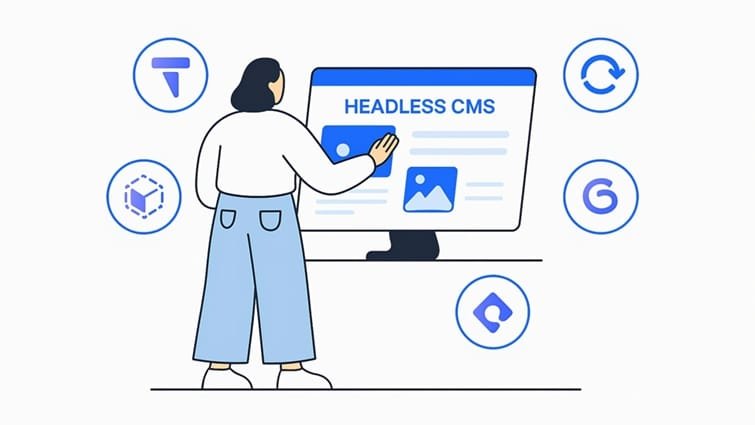Customer support and help centers are essential elements of the customer journey, they’re key touchpoints in satisfaction, retention, and loyalty. Customers expect easy access to quick, accurate answers on websites, within a company’s mobile app, via social media access points. However, many companies jeopardize the service experience by inappropriately supporting too many channels with wrong, untimely access to information. Unfortunately, too much access to content gives way to too many incorrect or outdated help items over time especially when different systems need manual adjustments to assure uniformity across multiple channels. Silos create redundancies in resolution avenues which irritate customers navigating compliance, help with too complicated of a compliance process or articles that haven’t been updated for months and prevent the resolution. Additionally, delayed resolution occurs when too many troubleshooting articles for the wrong issue exist and attempt to guide the customer but, instead, serve as additional pain points.
A headless CMS can alleviate these issues. A headless content management system disconnects the front end from the back end; therefore, both processes can live on different channels while existing in one central location. Thus, support and help content can live accurately while rendered effectively across various channels, websites, customer portals, mobile apps, FAQs, forums and social media without requiring redundancies or offering excessive avers in access to answers with inconsistencies. This is a scalable solution for self-service customer support destined to grow with product and service offerings.
Support Content All in One Place for Uniformity
Customers have also shared complaints about support content being inconsistent. Articles, FAQ pages, troubleshooting guides and product documentation are often on separate systems internal wikis, outdated CMSs and PDF libraries that trying to make everything in alignment across every customer-facing thing becomes impossible. A headless CMS allows companies to piece together the fragments and organize them in one central repository that becomes the single source of truth.
This means that if someone on the team updates a troubleshooting guide or adds a step to a product setup article, that change automatically happens everywhere else that piece of content exists. Attend a Storyblok webinar to learn how businesses implement these practices for seamless knowledge sharing. Whether customers find it on the website, the in-app help center or within chatbot interaction, they receive the most relevant piece. This prevents inconsistencies, provides customer confidence and avoids unnecessary and excessive redundant support tickets.
Access to Support Content Across All Channels
Customers have come to expect that they’ll be able to access information wherever they go looking for it. Some might want an information-heavy help center experience while others might want quick answers via the chatbot. Some use mobile channels for accessing support while others may rely on voice activation while cooking or crafting for assistance. Unless each of those channels is managed independently, it risks duplication and possible inconsistencies.
A headless CMS solves such a headache by allowing content to be pushed to multiple channels via API. As long as what needs to get out there can fit the standards of its eventual destination. For example, a customer service support article is created and approved in the CMS, it can be distributed to all connected channels from websites to mobile applications to partner portals and even voice activation from a singular source without formatting changes. This promises that as long as something works within the confines of each channel, customers will receive the same caliber of support content everywhere for a seamless, professional experience.
Enabling Faster Updating of Content During Fluid Situations
Support content is not set in stone. Products change over time, features are expanded upon, and new issues arise that require remediation of help center content quickly and urgently. But traditional CMSs can complicate this with predetermined templates, reliance on developer support, and lengthier publishing processes.
With a headless CMS, however, support agents merely have to update things in the back end and changes can instantly be reflected in all channels. This is critical during situations where time is of the essence a product recall, major feature release, or company-wide technical issue as customers will receive consistent and effective communication to help them with their situation as quickly as possible. Plus, when support content can be changed quickly, it reduces the strain on live agents who can direct customers to conclusive self-service support instead of answering the same question over and over again.
Enabling Customized and Segmented Support for Various Types of Users
Not everyone is the same when it comes to needing support. Some customers are going to need help one way because of their length of time using the product, whereas others are going to need different assistance based on daily usage versus seasonal use or a specific purchase versus ancillary purchases. A headless CMS enables segmentation of support content to filter and customize information for varied audiences.
For example, more technical users might be able to see access to technical documentation while beginner users will be pointed to novice how-tos. Enterprise users will be able to see content relevant to their integrations while retail customers can see shorter documented videos. Ensuring people receive the correct content increases resolution numbers, fosters customer satisfaction and engagement, and decreases added frustration from seeking support that doesn’t relate to their specific needs.
Connect Help Center Content to Self-Service Options
Self-service support solutions become a growing pattern as customers can assist themselves without waiting for an agent. A headless CMS can serve as a content repository for self-service solutions that require some level of interactivity, from troubleshooting wizards to guided flows for product setup and even AI chatbots.
When support content exists in a formatted and reusable style, it can be the origination point for various self-service options without duplication. Ultimately, customers will receive the right answer no matter which avenue they follow or which interface they engage with; for the organization, this reduces development time across duplicate content and increases efforts for ever-evolving quality of information.
Improved Synergy Between Support and Product Teams
Support teams work on the front line, providing insight into customer challenges based on their troubleshooting experience with consumers. A headless CMS offers support team members and technical writers, coupled with product teams, to operate in the same space, collaborating on content creation and maintenance.
Help documentation becomes more valid when the people who have the most access can collaborate to create. It’ll always be up-to-date based on recent iterations of the product and customer feedback and built-in workflows and approval paths ensure appropriate subject matter experts are consulted before anything goes live to prevent disinformation.
Assess and Improve Support Content Effectiveness
It’s important to measure effectiveness over time for support documentation just like with marketing content, to adjust for the most beneficial engagement. A headless CMS can integrate with reporting and analytics software for a better understanding of how customers engage with supportive materials. Article search metrics, help center views, time spent on a page or articles, and resolution rates can note what’s going well and what requires improvement.
For example, if support teams note a consistent keyword in searches and around a specific error code, but customers turn away even returning to the main help center page instead of leaving satisfied this is an opportunity for new or strengthened content. When organizations rely on data for expansion, incremental adjustments to help centers can reduce ticket volume.
Less Tickets with Proactive Updates to Support Content
Preventing issues before they turn into tickets is one of the best ways to ease the support load. Support content can be proactively updated via a headless CMS by monitoring industry trends, internal product release notes, and even seasonal support needs. For example, if analytics show a great deal of inquiries surrounding a brand new feature, new guides or FAQs and tutorials can be pushed live across the board in an instant so customers can solve their own problems before reaching out to support. Not only does this swift, proactive approach improve the customer experience, but it gives support teams time to focus on more complicated or specific inquiries.
Global Customers Supported with Localized Help Content
When organizations have international customers, localized support becomes a necessity. A headless CMS can more easily manage multiple language versions of the help content so customers in different areas can access the information they require, in the preferred language, dialect and context. Localization workflows can accommodate specific terminology, cultural differences, and even region-specific compliance. The ability to access regionally-supportive information without needing to duplicate the entire knowledge base provides organizations with global agility while maintaining intentional localized support.
Future-Proof Support for New Channels and Experiences
Customer support doesn’t just live in a help center or call line anymore. As voice assistants provide customer service, customer service bots and messaging programs and augmented reality platforms support inquiries are opening other avenues for many organizations. A headless CMS future-proofs support operations by allowing content to go anywhere, on any device, via APIs. So when new technologies come to light, existing help center content can be repurposed and redeployed instead of forcing the organization to start from scratch with infrastructure, support team expectations or customer experience.
Conclusion – Creating a Scalable and Effective Support Experience
A headless CMS revolutionizes the way companies approach customer support and a help center by doing it all through an intelligent, centralized, future-proof system for support content. Teams no longer need to work in silos or, even worse, not at all and manually duplicating across other sites; articles, FAQs, how-tos, bug fixes all output exists in one form structured and reusable which means the second something needs to change a product feature, a changed suggestion, a bug just discovered it changes automatically everywhere it needs to change to create a consistent experience for the customer.
Multi-channel delivery is also instinctive because the content can be pushed to websites, apps, chatbots, social feeds, and voice assistants without adding any additional burden to the business. Instead, businesses can provide the same branded help content across various venues because it all comes from the same place. Moreover, the ability to update rapidly means that any concern, legal disclaimer, or urgent need such as product recalls and security issues can be pushed to the customer base before they even need to reach out for help. This reduces response time and frustration levels almost instantly.
Headless also improves the content thereof with personalization that allows companies to understand which content works best for which customer. A new buyer looking for installation help is different from a long-time customer looking for troubleshooting at an advanced level. Being able to utilize self-service integration capabilities minimizes unnecessary live customer support conversations while simultaneously helping customers understand how best they’d like to use the service in that moment. In addition, there is a collaborative space for support and product/technical integrations so that everyone is working together on content creation and modification ensuring appropriateness and relevancy to what the product can do at the moment.
Ultimately, headless creates an automatic awareness of flexibility and scalability that companies grow into over time. As products and services become more complicated and more support opportunities arise, a headless solution scales in real-time without worrying about consistency or control assured accurate support help content is available and disseminated evenly across customer touchpoints. This helps businesses scale response time (no duplication of inadvertent redundant questions), minimize operational costs (redundant questions become few and far between), increase customer satisfaction (immediate, relevant answers get sent faster) and build brand loyalty by consistent quality of support. As companies move deeper and deeper into a preference economy where speed is not a luxury but an expectation with self-service availability, implementing a headless solution is more than a technical investment; it offers strategic positioning for sustained customer experience at scale and goodwill with audience trust.



